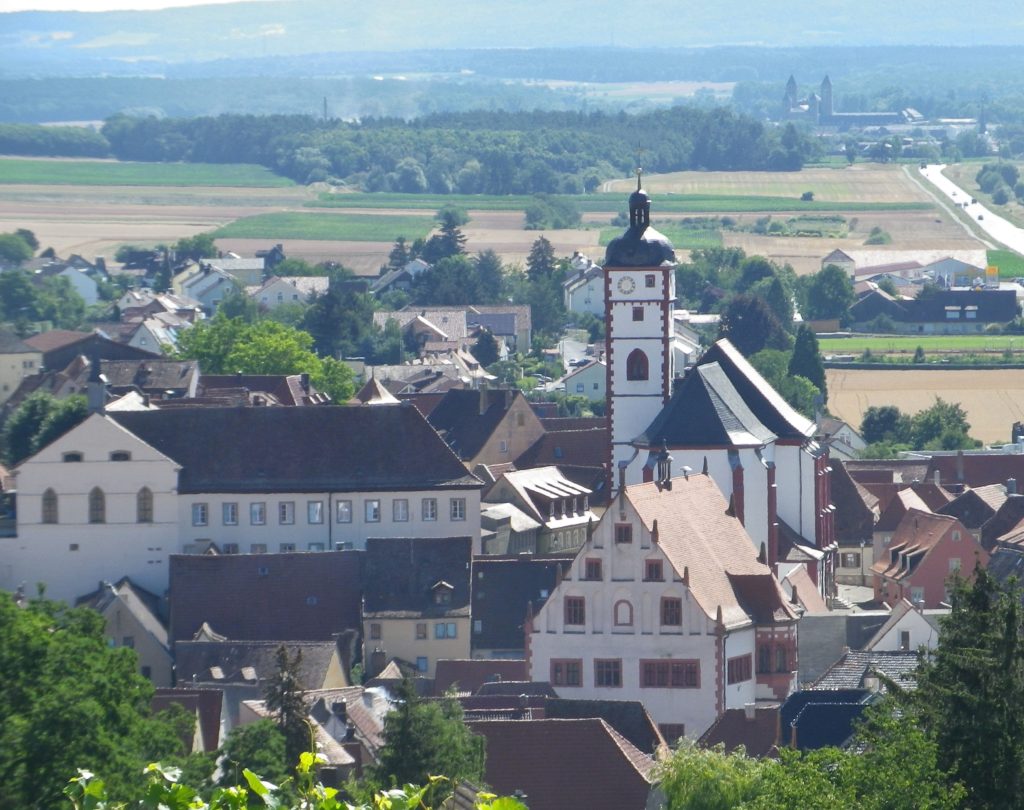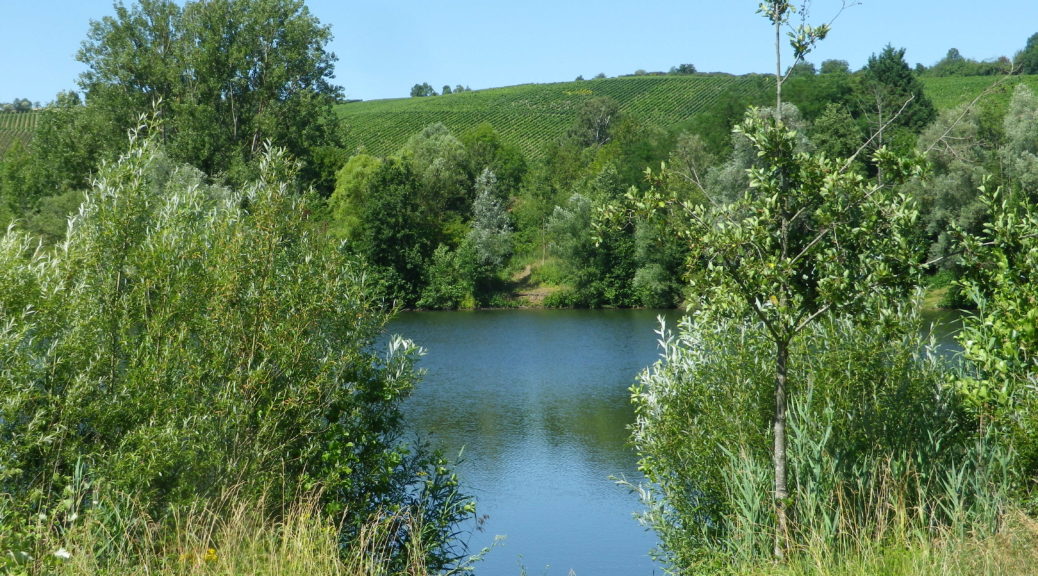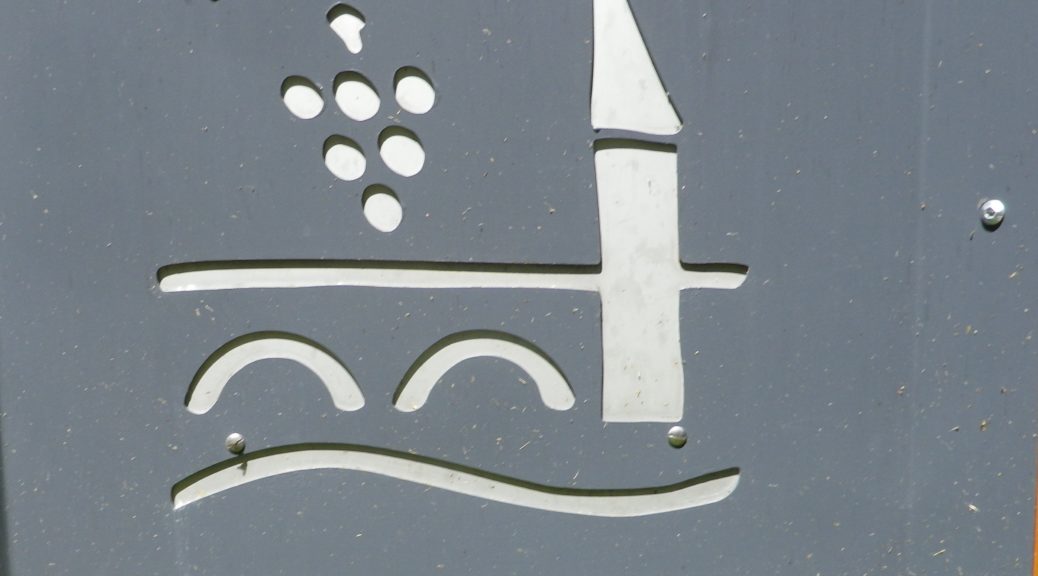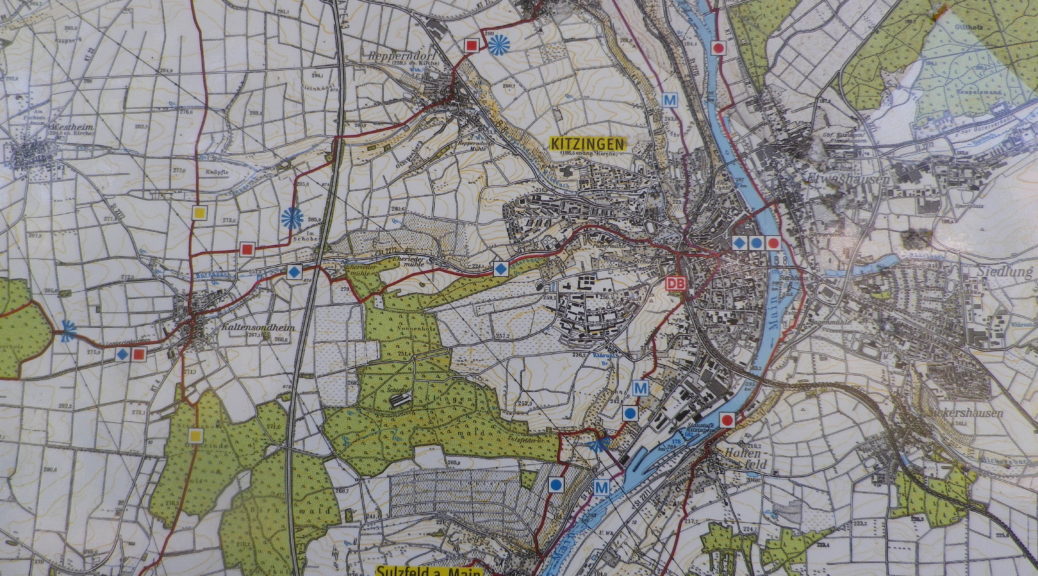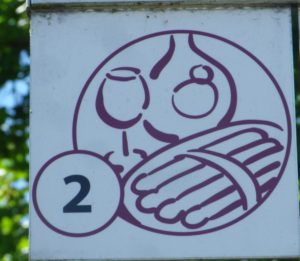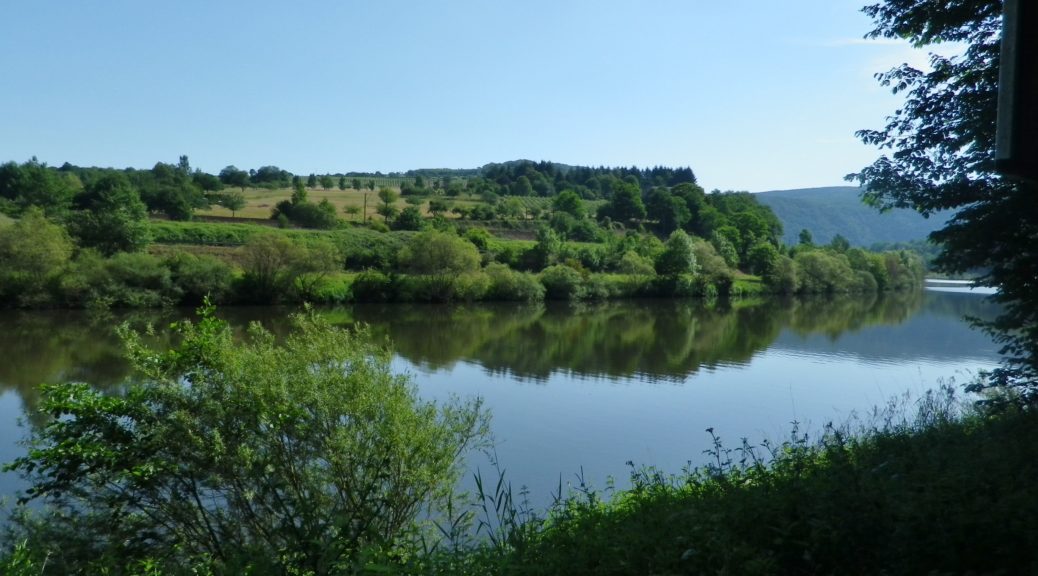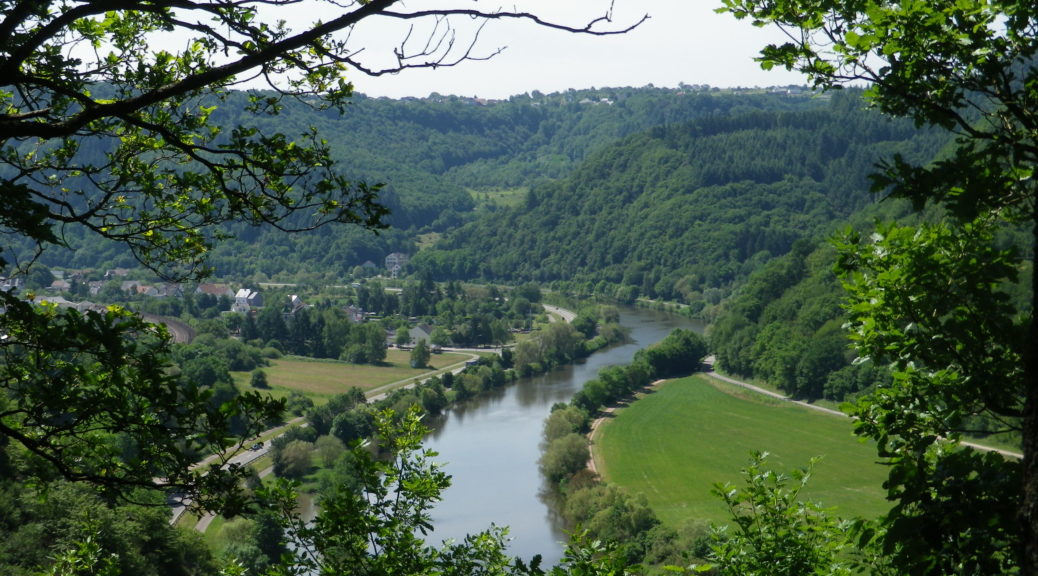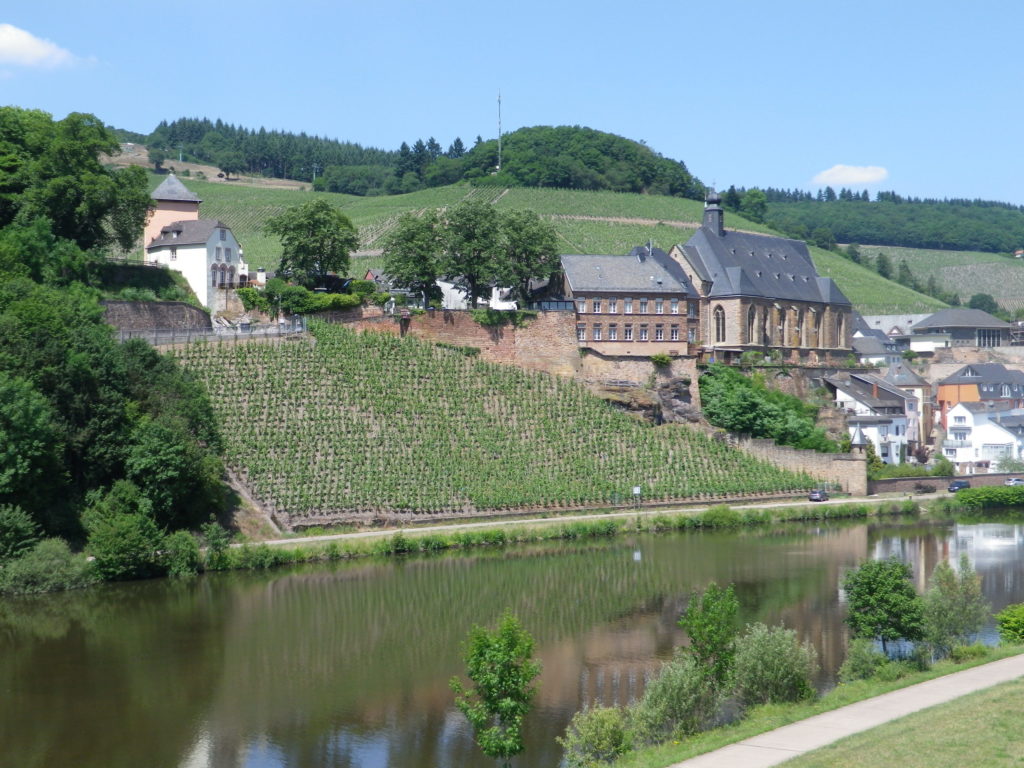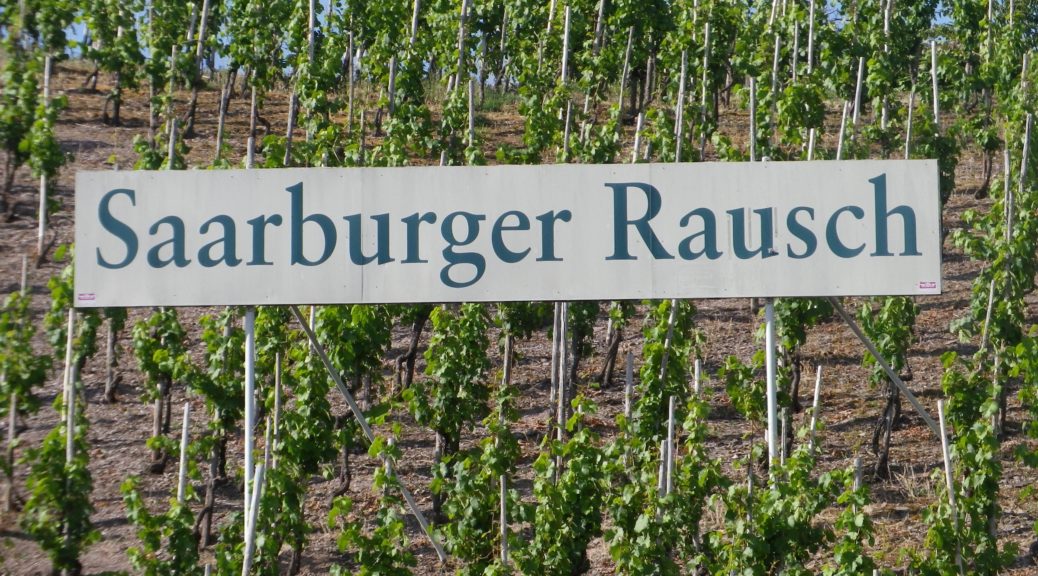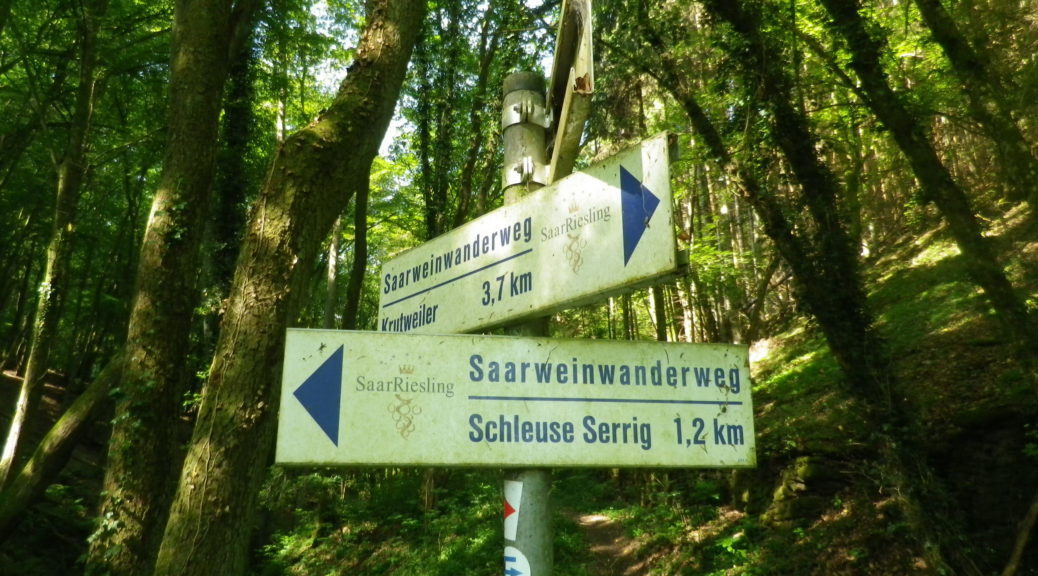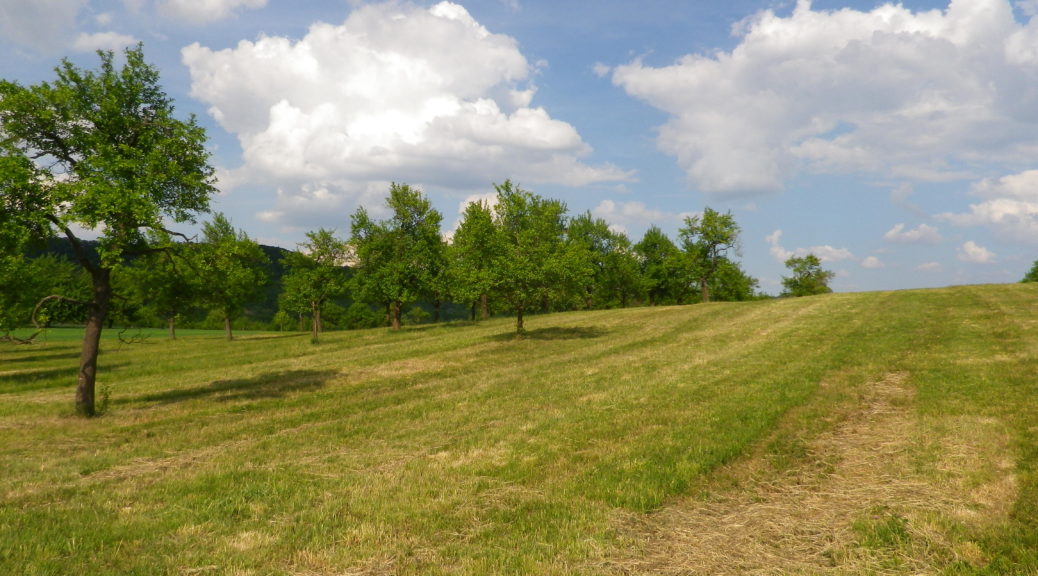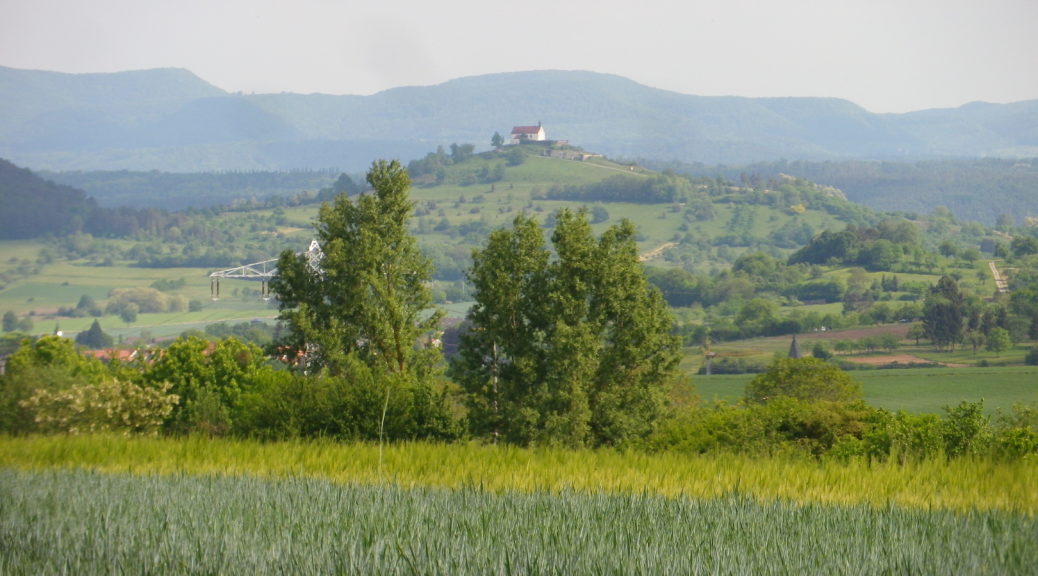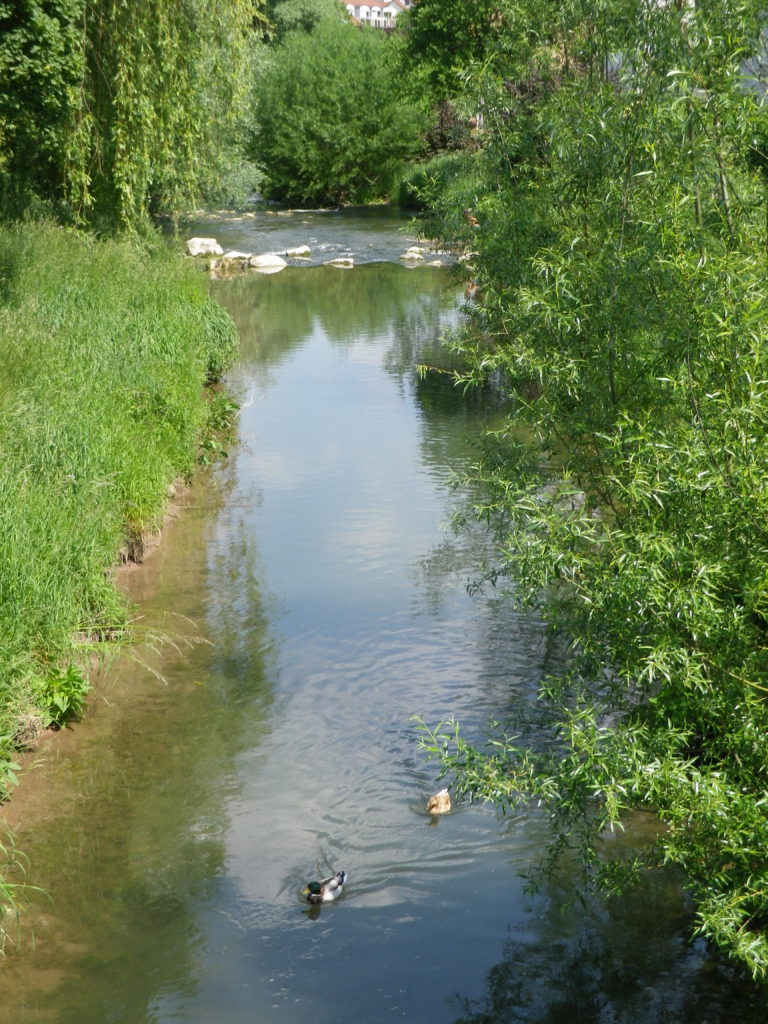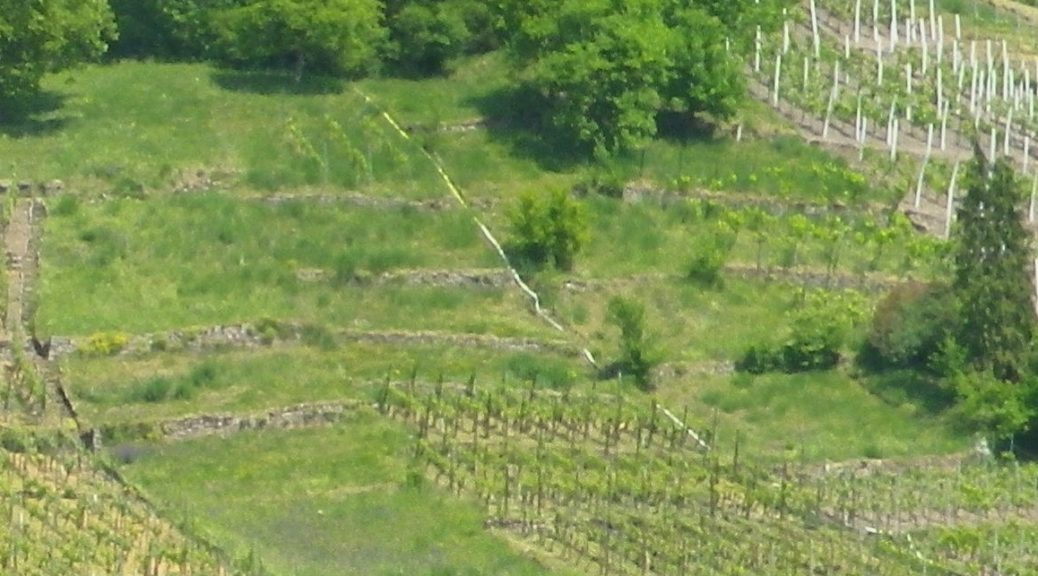Another cycling route, and another chance to sample the wines along the Main River. The Main River valley is famous for its wines and its long-distance bike trail, the Main Radweg. It is one of Germany’s most popular cycling itineraries, justifiably beloved for its combination of pretty scenery, easy riding, welcoming towns and villages, and its wine culture. Many cyclists complete the entire Main Radweg. It is almost 400 kilometers long, and is not a circuit. This endeavor calls for time as well as careful advanced planning, which are usually in short supply for most of us. The Geniesser Tour cycling itinerary however is a wonderful alternative. Depending on stops, it is a half-day to a day-long circuit through one of the quietest sections of the Main Radweg in the Franconian wine region’s eastern Maindreieck district.
Beginning in Dettelbach, a well-known wine village, the trail followed along the river on the Main Radweg for about three kilometers. At Mainstockheim, the Geniesser Tour route peeled off into the hills above the river. The GWF, or the Winzergemeinschaft Franken, to give it its full name, came into view after passing through Buchbronn. GWF wines can come from grapes from various wine districts of Franconia. But the closest were found along the trail in the vineyards outside little Repperndorf. The trail entered Kitzingen shortly thereafter. It is undoubtedly the largest town in the area, with an historic center that is well worth the 500-meter detour. But if you push on, not to worry: the route does circle back to Kitzingen, albeit on the other side of the river.
